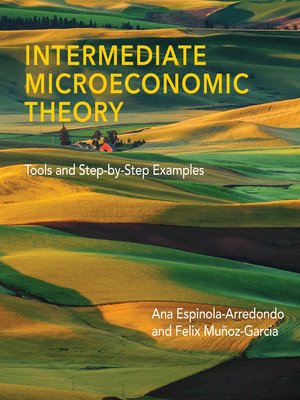
Sign up to save your library
With an OverDrive account, you can save your favorite libraries for at-a-glance information about availability. Find out more about OverDrive accounts.
Find this title in Libby, the library reading app by OverDrive.



Search for a digital library with this title
Title found at these libraries:
| Library Name | Distance |
|---|---|
| Loading... |
A short, rigorous introduction to intermediate microeconomic theory that offers worked-out examples, tools for solving exercises, and algebra support.
This book takes a concise, example-filled approach to intermediate microeconomic theory. It avoids lengthy conceptual description and focuses on worked-out examples and step-by-step solutions. Each chapter presents the basic theoretical elements, reducing them to their main ingredients, and offering several worked-out examples and applications as well as the intuition behind each mathematical assumption and result. The book provides step-by-step tools for solving standard exercises, offering students a common approach for solving similar problems. The book walks readers through each algebra step and calculation, so only a basic background in algebra and calculus is assumed. The book includes 140 self-assessment exercises, giving students an opportunity to apply concepts from previous worked-out examples.
This book takes a concise, example-filled approach to intermediate microeconomic theory. It avoids lengthy conceptual description and focuses on worked-out examples and step-by-step solutions. Each chapter presents the basic theoretical elements, reducing them to their main ingredients, and offering several worked-out examples and applications as well as the intuition behind each mathematical assumption and result. The book provides step-by-step tools for solving standard exercises, offering students a common approach for solving similar problems. The book walks readers through each algebra step and calculation, so only a basic background in algebra and calculus is assumed. The book includes 140 self-assessment exercises, giving students an opportunity to apply concepts from previous worked-out examples.







